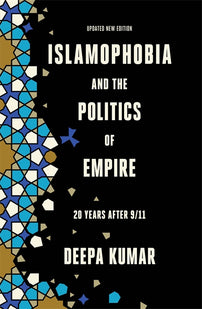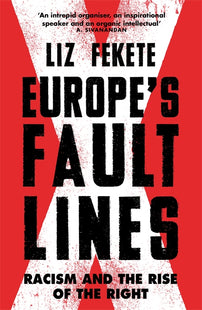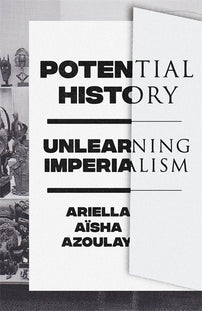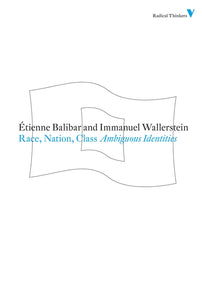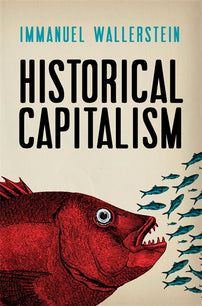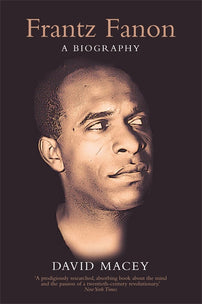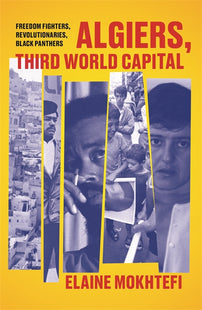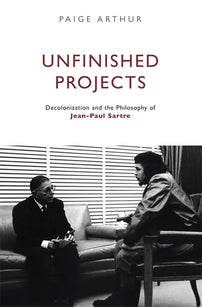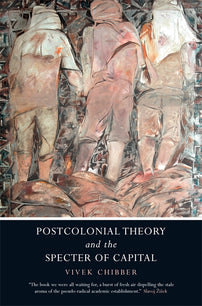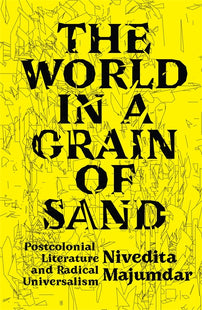The Parti des Indigènes de la République - A political success and the conspiracy against it (2005 to 2020)
Houria Bouteldja and Youssef Boussoumah, co-founders of the Parti des Indigènes de la République in France, detail the party's history, the French anti-racist and anti-imperialist movement, and their own experiences engaging in anti-racist politics over the last fifteen years.
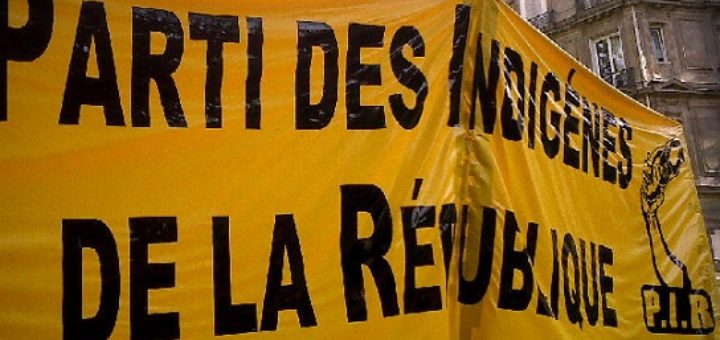
Houria Bouteldja and Youssef Boussoumah
Parti des Indigènes de la République[1]- A political success and the conspiracy against it (2005 to 2020)‘
***
The bride can expect compliments only from her mother, perhaps only from her own mouth’ – Algerian proverb
Foreword. This report can be considered either as a critical contribution to the debate on the advances and failures of the decolonial movement in France, or alternatively as a fable. It will be a fable if political forces with revolutionary pretensions persist in denying the existence of an active White resistance in their midst, and refuse to cut the Gordian knot of race that prevents any strategic alliance between White and non-White working classes, perpetuating imperialist domination. If this objective has not been achieved, we hope it will at least have value as an exhibit in a history of post-colonial immigration. The report is the sole responsibility of its authors.
I. Ruptures
Radical Indigene autonomy was above all a matter of ruptures with the Left, which we had to call ‘White’ in order to make the divorce explicit. If the word ‘ruptures’ is used in the plural, it is because the separation was not only physical: it was also intellectual, spiritual and aesthetic.
1. Rupture with the Left and first declarations of war
The 2005 riots were not only a detonator that would chip away at the glass ceiling of racial discrimination and save thousands of Indigenes, recruited in a panic, from endemic unemployment – particularly in the media sector (making visible minorities that were actually ‘invisibilised’), but also in certain branches of the private and public sectors. While the riots did not put an end to racism or bring justice to the insurgents, they did accelerate the social promotion of the best endowed and most highly educated stratum of Indigenes, as well as boosting ever-active media figures such as the activist and columnist Rokhaya Diallo, the writer Faiza Guène, the ‘under control’ journalists of the Bondy-blog, or acceptable and no less corseted activist figures like Mohamed Mechmache. They also, perhaps most importantly, prepared the ground for political anti-racism, which would definitively impose itself as a political reality in 2015, after the success of the first Marche de la Dignité. The role of the riots was crucial, even if it should not be overestimated. Indeed, a few months earlier, the ‘Appel des Indigènes de la République’ had made a dramatic entry into public debate and shaken up the French universalist good conscience. It was the work of an anti-racist and anti-imperialist vanguard determined to put an end to the myth of a universalist Left in genuine solidarity with post-colonial immigration, a Left that had just shown its true colours by complicity in or active support for the Islamophobic law of 15 March 2004.[2] If the appeal met with enormous success, there was nothing to say that this first victory would have been transformed into a political force if the riots had not taken place, just as we may wonder about the possibility of a political expression of these same riots if the appeal had not existed. In reality, we believe that the two phenomena fed off each other. One pulverised the myth of the Republic in the eyes of the world, revealing its consubstantially discriminatory nature and its regime of social quasi-apartheid, while the other produced the theoretical and strategic tools for a new utopia: that of the decolonisation of France and why not the world? To do this, it was necessary to found a new political community that would break with the old one.
The divorce with the White Left was pronounced, and it was not going to be a smooth one. The more the hard core, mainly made up of Indigenes, asserted its autonomy, the more the White allies drifted away, with more or less in the way of rows, rifts and disappointment. Those who expected us to be green-compatible, left or far-left compatible moved away, as did those who expected us to be progressive, feminist or pro-LGBT. The more we asserted our autonomy from the White political field, both organisationally and theoretically, the more we multiplied the number of our opponents. Belonging to neither Left nor Right, but to the South of the North, would create a deep misunderstanding.
Thanks to this divorce, notions of ‘social races’ and ‘Whiteness’ blossomed, first in the activist field and then in the academic and media field. These were in no way elaborations of the PIR, but politicised by it in France, in the context of a ‘colonial Republic’ and based on the specific history of France’s Indigene populations – the transatlantic slave trade, colonisation, labour immigration – and their specific condition within the nation state, that of an illegitimate ‘third people’, excluded from political representation and socially segregated. The PIR’s own concepts of a ‘White political field’ and a ‘decolonial majority’ were elaborated subsequently. Our enemy was ‘Western modernity’, defined by us as ‘A historical globality characterised by capital, colonial/post-colonial domination, the modern state and the hegemonic ethical system associated with it.’
The scandal that followed the Appeal, and the cleavage that ran through all sections of the Left, would continue for fifteen years, constructing and reconstructing new fault lines and alliances until the last living forces of the White Left were completely exhausted.
2. Theoretical rupture and birth of a new political subject
‘We’re getting it on, loud and strong, with our dirty coloured mugs!’[3]
Contrary to what has been written here and there, Indigene ‘identity’, as expressed in the Appeal, was not linked to any cult of roots, a mythology of origins, or a self-substantialisation as eternal victim. Arrogance or pride in being Indigene were alien to us. Cultivating Indigene identity or any kind of ‘Indigenitude’ was not our purpose, and we were far from thinking that Indigenes were ‘beautiful’! The Appeal did not encourage any self-indulgence or self-celebration, still less a spirit of revenge. The ‘Indigene difference’ existed only in a negative sense, as a community of oppression, a contradictory assignment to both difference and assimilation. What positive difference could unite the West Indian, the undocumented Senegalese and the daughter of Algerian immigrants? None, of course. Indigene identity, if it existed, was an identity of rupture with a certain history (multiple histories), an identity of crushed, deformed memory; a memory of the oppression suffered by ancestors and continuing in the ‘host’ country, the same country which had colonised the lands of origin, massacred and enslaved their populations or forced them into exile.
It was, therefore, not a question of injecting a few drops of melanin into the French flag, but of changing its palette altogether. We refused, in fact, to consider France as an immutable essence, irremediably fixed and homogeneous; we refused – and besides, we were not really allowed – the obligation to fuse into this ‘national melting pot’. Not out of pride, or capriciously clinging to fixed identities and other memories, but because the Republic’s non-recognition of the histories and trajectories that determine the plurality of identities is constitutive of colonialist nationalism. We therefore refused the assimilationist principle and its euphemistic form of integration, which masked the paradoxical demand for us to renounce ourselves without being recognised by the other. The alternative was, on the contrary, to radically abandon this imposed problematic. It was not a question of creating ‘passageways between the two zones’, to use Frantz Fanon’s phrase, but of reconstituting the entire space. If we were to sketch out another France as a ‘nation’, we would have to imagine it as an open historical reality, as the Austro-Marxist Otto Bauer did in another context: ‘At no time is the history of a nation complete. Fate, in its transformations, subjects this [national] character, which is clearly nothing more than a condensation of past destiny, to continual change... In this way, national character also loses its supposedly substantial character, i.e. the illusion that it is the lasting element in the flight of events... In the universal flux it is no longer a persistent being, but a continuous becoming and disappearing.’ In a word, it was not up to us to disappear, but to the nation state. The post-colonised was the new political subject that had to accomplish this mission. Goodbye ‘Blacks’[4] and ‘Beurettes’[5] on the way to integration. Hello the ‘discordant Indigene’.
[book-strip index="1" style="display"]3. Strategic rupture, rupture with neighbourhood association, and conquest of power
Political independence was for us the first condition for Indigene liberation. It was not just a profession of faith in favour of autonomy, but the conquest by the Indigenes of their freedom of thought, decision and action in relation to colonial and racial ideology, in relation to the state and its institutions and in relation to all non-Indigene political forces. Political independence did not contradict to unity of action with non-Indigene forces, provided that such collaboration was decided in complete freedom, that it contributed to the evolution of the balance of power in favour of Indigenes and that it effectively participated in the construction of Indigene political power. In this way, we aimed at becoming a political organisation which, although aware of the difficulties, did not lose sight of power, or at least did not renounce this strategic objective.[6] With power in its sights, the PIR broke not only with the left but also with other Indigene organisations which, when they were not subject to organisational control from above, were mostly neighbourhood groups. In fact, breaking with the White political field meant breaking with traditional Indigene struggles, all of which without exception were caught in the net of the White Left, often because they were subsidised, inscribed in the ideological paradigm of the Left, and thus disaffiliated from their own history. Autonomous organisations like the Mouvement de l’Immigration et des Banlieues (MIB) [7] could be an exception from a formal point of view, but remained theoretically moored to the global analytical grids of the Far Left, even if its famous formula ‘colonial treatment of the suburbs’ announced an attempt at emancipation.
And it’s no coincidence that, from the moment we appeared, it was the MIB that benefited from all the largesse of the radical Left, despite having been heavily ostracised during the most offensive and harsh struggles against double penalty and police crimes. So, when the PIR appeared, the Left rediscovered the MIB’s virtues (after it had refused to sign the PIR Appeal[8] and rebranded itself as the Forum Social des Quartiers Populaires [Social Forum of Working-Class Districts]) and worked to keep it on life support by funding its new activities, including the first Social Forum of Popular Neighbourhoods held in Saint Denis in June 2007,[9] and the commemorations of the March for Equality in 2013. Its new sponsors hoped to block the PIR– not without a certain measure of success – and assembled the means for this. Thus, contrary to the legend maintained by certain MIB people and White leftists, our main flaw was not so much our illegitimacy as Indigene ‘bobos’,[10] ‘intellectuals’ without connections on the ground, but rather our total independence, which by contrast revealed the subordination of self-proclaimed ‘terters’.[11]
4. Rupture with progressivism: an offence to White beauty
If the theoretical and organisational break with the White political field, coupled with a political strategy for the conquest of power, had hardened White forces against the MIR/PIR, the radical critique of progressive thought would definitively widen the gap. For if a minority fringe of the Left (in all currents) could admit the existence of structural racism and the need for self-organisation, they would definitively turn their backs on us when we attacked what constituted the core of White emancipatory struggles: feminism, the struggle against anti-Semitism, LGBT struggle. Our analyses of state philo-Semitism, gay imperialism or the ideology of miscegenation, our contestation of the universality of feminism or sexual identities, our defence of non-White masculinities, were like successive bombs. Here we were touching the hard core of supposed White dignity in the face of what constituted its actual ugliness (colonialism, racism, anti-Semitism, sexism, homophobia). If the critique of fraternalism, paternalism or colonial feminism had already existed for a long time, the PIR delivered the final blow: not only do these emancipation struggles have nothing universal about them, but they are all shaped by a civilisational and Eurocentric project which has as its universal referent the condition and defence of White proletarian classes, whether they are workers, women or homosexuals. Thus, White emancipation struggles were seen in their particularism and singularity. It was no longer a question of simply adapting or ‘decolonising’ them. In the PIR, we were entitled to reject them. Our ‘insolence’ led us to pose the problems from a new angle:
- Is the fight against anti-Semitism as practised by the Left really effective in getting Jews out of their ghetto, or is it simply a form of philo-Semitic good conscience that merely prolongs traditional anti-Semitism? Is the Indigene woman really more oppressed than the Indigene man? Isn’t applying to homosexuals in the South sexual identities produced in the North, and judging them on the basis of their adherence to these identities, an imperialism that does not speak its name? Isn’t supporting resistance movements of the South only when they accept the ‘values’ and ideologies of the North, and despising them when they adhere to Islam, a form of unacknowledged Eurocentrism? Isn’t accepting the imprisonment of Tariq Ramadan, even though he has not been tried, a way of absolving White patriarchy? Is not Dieudonné’s[12] anti-Semitism the product of moral anti-racism? Are jihadist terrorists primarily Muslims or primarily French? All these are ‘unanswered’ questions, since the fear is that the answers would undermine the foundations of ‘White beauty’ and force those courageous individuals seeking to tackle them to completely rethink their relationship with the world and recognise themselves for what they are: Whites constructed by five centuries of undivided domination, who have built a world in their own image and in the service of their interests.
This approach should not be confused with a contempt for White struggles, let alone a spirit of revenge. It is an act of liberation based on an experience of subordination to Whites, but also on a materialist approach whose principle is to resituate the Indigenes in their history and their relation to power. As Sadri Khiari reminds us: ‘The unity of the Indigene seeks to build itself through multiple tensions, and this unity does not necessarily coincide with, and sometimes opposes, the unity of workers, women, gays or atheists at the level of the whole of society.’[13]
Let it be said here, once and for all, that what we have in mind when we criticise progressivism as it actually manifests itself is:
- First and foremost, that it is a cog in the wheel that binds the White subaltern classes to their bourgeoisie, one of the modalities (in the form of various rights or privileges) of the sharing of imperialist rent. This is why we insist: no workers’ struggles without internationalism, no feminism or LGBT struggles without anti-imperialism. A rule we impose on ourselves: no anti-racism without anti-imperialism! In this, we are part of a political tradition that is properly anti-colonial but also Marxist, since Marx and Engels themselves had already identified workers’ chauvinism as the real obstacle to unity between peoples.
- Secondly, that it is out of step with deep-seated tendencies in the working classes who, as Sadri Khiari reminds us, do not live ‘simultaneously’ with the middle and upper classes. Indigenes, like the White working classes, live in their own space/time. Thus, their conservatism or their reactionary tendencies have material foundations that we need to understand rather than stigmatise. Bringing these contradictions to light had only one aim, which was made clear in several of our interventions: to make the forces with revolutionary pretensions accept getting their hands dirty with ‘barbarians’ who are not very progressive but indispensable to the creation of a decolonial majority. As Lenin put it:
Whoever expects a ‘pure’ social revolution will never live to see it. Such a person pays lip-service to revolution without understanding what revolution is… The socialist revolution in Europe cannot be anything other than an outburst of mass struggle on the part of all and sundry oppressed and discontented elements. Inevitably, sections of the petty bourgeoisie and of the backward workers will participate in it – without such participation, mass struggle is impossible, without it no revolution is possible – and just as inevitably will they bring into the movement their prejudices, their reactionary fantasies, their weaknesses and errors. But objectively they will attack capital, and the class-conscious vanguard of the revolution, the advanced proletariat, expressing this objective truth of a variegated and discordant, motley and outwardly fragmented, mass struggle, will be able to unite and direct it, capture power...
This is precisely what C.L.R. James said about Black movements ‘which seek to get the Jews out of Harlem or the South Side and which have a strong class basis. They are reactions of the revengeful Negro seeking economic relief and some remedy for his humiliated racial pride. But Negroes are proletarians, semi-proletarians and peasants in their social composition. The general course of American history is such that any nationwide fascist movement (however disguised) will be forced to attack the Negro struggle for equality.’
To put it another way, our critique of progressivism has a strategic aim: to facilitate an understanding of Indigene conservatism in order to remove ideological blockages that hinder convergence with White progressives.[14] This is the analytical grid that we have applied from the start to the gilets jaunes, spontaneously apprehended by the White Left as ‘anti-Semitic’ and ‘reactionary’.[15]
That said, we have never spared any effort to save the Indigene ‘beauty’ dear to James Baldwin, and we also have the honour of having significantly[16] rebuffed Soralism[17] among the abandoned neighbourhood youth who were attracted by its conspiratorial, macho and anti-Semitic ideas.[18]
5. Spiritual and aesthetic rupture
The first Marche des Indigènes de la République set the tone. On 8 May 2005, we had an appointment with history. First, second and third generation Indigenes marched alongside some of the greatest figures in French (and Western) history, yet who are not in its Pantheon: Thomas Sankara, Patrice Lumumba, Nelson Mandela, Solitude, Emir Abdelkader, Abdelkrim el Khattabi, Toussaint Louverture, Yasser Arafat, Sitting Bull, Geronimo, Malcolm X, Rosa Parks, Amilcar Cabral, Ho Chi Minh, General Giap, Ali La Pointe, Jamila Bouhired, Angela Davis, Mohamed Ali, Fernand Iveton, Louise Michel, Jean Genêt and so many others. Through them, we were reconnecting with our past, with our memory of struggles. Through them, we decided to be reconciled with ourselves, to exist, to carry our dignity high and strong. We honoured our liberators and in return they gave us their blessing and promised to watch over us. Our songs and music were not ‘Bella Ciao’, the ‘Chant des Partisans’ or the ‘Internationale’. They were the Algerian anthem, the songs of Myriam Makeba, those of working-class immigrants, of undocumented migrants, rap, and songs glorifying the Palestinian resistance. Later, when it was necessary to pay tribute to the martyrs who had been killed in the colonies or by the police, we said prayers and broadcast verses from the Koran. If, for the Left, religion was the opium of the people, for us it was first and foremost the breath of the oppressed and their rediscovered integrity.
II. Political anti-racism: a compromise between integrationism and decoloniality
The proliferation of ruptures was not without risk for the future of the MIR/PIR. Our death was announced many times, and our survival after each scandal was miraculous. Each controversy weakened us as much as it strengthened our influence in the debate, since each one drew a dividing line within the Left between a minority that defended our claim, or our right to make it, and a majority that was shocked, shaken and stunned by what was interpreted both as reactionary thinking and a mortal danger, notably for the unity of the Left. If self-assertion was a necessary step, the hostility was such that it already threatened in the 2010s to isolate us completely, to dry up our support and repel the most politicised Indigenes, frightened by our pariah status. One fact is undeniable: the more we asserted our autonomy and radicalism, the more we found ourselves in opposition to Indigene integrationist ambitions, and people moved away. The more the White political field rejected us, the more we lost credibility with our own people, whether because of professional reasons, careers in research, political moderation, or more or less formal subordination to this or that left-wing camp or this or that source of funding. In short, radicalism and rupture, far from being achievements, were still battlefields and conquests to be made. It was then that we had to change our approach and gradually replace self-assertion by virtuous alliances that would both reassure the Indigenes and radicalise them at the same time.
Ask any activist who supports political anti-racism to give you a clear definition of what this movement stands for. They will answer something like this: ‘It is the emergence of a new political consciousness that opposes the “moral anti-racism” inherited from the Mitterrand years with political anti-racism that attacks state racism and not just the racism of the Far Right or nightclub managers’ – as was the case with the ‘manifesto for a political anti-racism’.[19] This definition is fair, but weak and biased with regard to the structural reasons for its appearance. Indeed, political anti-racism is essentially a compromise between the spontaneous ideology of the Indigenes – integrationism – and the decolonial project of the PIR.
It is also and above all a strategic project of the PIR.
It is important here not to confuse political anti-racism with the decolonial project. The former expresses the most radical political ambition of integrationist Indigenes. The latter has a revolutionary claim and is essentially carried by the PIR.
However, the defect of the second is that it does not correspond to the spontaneous ambition of the Indigenes: to become French people like the others. We came up against the wall of Indigene integrationism, so much so that when we took stock of the situation at the end of the 2010s, we realised that, rather than stubbornly defying this ambition, we had to get round it. First, by participating in 2011 in the creation of the Front Uni des Immigrations et des Quartiers Populaires (FUIQP) [United Front of Immigrants and Working-Class Districts] (seen as less ‘racialist’ and therefore more respectable), and then, more decisively, by putting in place a ‘strategy of fronts’ described in a two-part text entitled ‘To Farida Belghoul and the heirs of the “beurs” march – the proper use of a legacy’.[20] We proposed in this way to adapt our project to the objective but nonetheless integrationist radicalism of the most mobilised Indigene forces: against the police, against Islamophobia, against Israeli colonialism. We wrote at the time: ‘the combined action of these three fronts would lay the foundations for a real and controlled recomposition of anti-racism around the three main pillars of racism and, consequently, of its victims. It would contribute to the strengthening of political anti-racism and would ruin moralist projects.’
This is indeed what would happen around the following three fronts:
- Front against Islamophobia, expressed in the international conferences against Islamophobia, which welcomed the most radical fringes of the Indigenes and the White Left, the PIR being a main initiator along with the University of Berkeley.
- Front against police violence, embodied by the Marches de la Dignité, the first of which was launched on the 10th anniversary of the PIR by Amal Bentounsi, with Angela Davis as patron.
- Front for Palestine, formed during the joint demonstrations against the bombing of Gaza in the summer of 2014, in which the Nouveau Parti Anticapitaliste (NPA) [New Anti-Capitalist Party], the Union Juive Française pour la Paix (UJFP) [French Jewish Union for Peace] and the PIR were the main forces working to compel unity between the consensual pro-Palestinian forces (Communist Party, CGT,[21] the Collectif National pour une Paix Juste et Durable entre Israéliens et Palestiniens) [National Collective for a Just and Lasting Peace between Israelis and Palestinians] and the Muslim and Palestinian organisations. This last front never succeeded in establishing a long-term presence.
The idea of ‘political anti-racism’, which had remained confidential until 2013, exploded after the first Marche de la Dignité to the point of appearing in most press articles commenting on the march. It was in everyone’s mouths: our own and our enemies’. And for good reason! The idea had been making its way from initial experiments,[22] via strategic implementation, to attempts to decentre it from the PIR[23] and its concrete realisation. Not all organisations and associations were involved in the same way in this movement, which was ideologically structured but vague in its contours and relatively informal. Some organisations were found in each of the fronts and were the linchpins. This was the case with the PIR, which was both the initiator and organiser of each of the groupings. But also the UJFP, the Association des Travailleurs Maghrébins en France (ATMF) [Association of North African Workers in France], the Fondation Frantz Fanon and the FUIQP. These four associations, with their global approach to anti-racism and anti-imperialism, were naturally always and systematically involved in each of the fronts without necessarily being the driving forces. The others, including Brigade Anti Négrophobie (BAN) [Anti-Negrophobia Brigade], Urgence Notre Police Assassine (UNPA) [Emergency: Our Police are Murdering], Collectif Contre l’Islamophobie en France (CCIF) [Collective Against Islamophobia in France] and Voix des Rroms [Romani Voice], were involved in more specific struggles and only participated in some of the fronts.
Thus, not only was an idea born, but also a new political phenomenon that became a reality, firstly because it was supported by numerous organisations that were not subject to the White political field, secondly because it permeated several left-wing forces, and thirdly because it was recognised by a significant fringe of civil society (White and non-White), the media and institutions. It was precisely at this point, in 2015, that the generalised offensive against the decolonial movement began, i.e. on a scale involving the major national media and no longer just the radical Left, taking the PIR as its main target – and rightly so. If political anti-racism was to be broken, they had to begin with the backbone. This would be the uncoordinated but active work of all the strata of White power, from which it should be remembered that the Far Left is not excluded. It must be recognised, however, that the demolition of the political anti-racism movement was not due to the White power alone, but partly also to the actions of certain non-White circles and personalities. And to be perfectly honest, political anti-racism was above all a victim of its own contradictions.
[book-strip index="2" style="display"]III. White resistance, internal contradictions and Indigene complicity
1. White allies (almost always) break away in the end
2015-16 saw both the apogee of political anti-racism and the beginning of its decline.
As we said earlier, with each ideological controversy we lost White allies. Those who had resisted the previous controversy broke away on the next one. It was even possible to have hung on and weathered several storms (critique of White feminism, support for Hamas and Hezbollah) and then drop out after the publication of Houria Bouteldja’s book, or over sexual identities. This was the case with Pierre Tévanian,[24] a long-time supporter, but whose break from us in 2013, provoked by the controversy over gay marriage, was never expressed in writing – which was an act of cowardice. This lapse deprived the debate of rational arguments and backed up the accusation of homophobia,[25] because if the confrontation of viewpoints had taken place fairly, we would have had the opportunity to present our arguments and at the very least to clear the honour of the PIR (since branded with a red-hot iron), especially as decolonial or Marxist analyses on the subject are now being calmly discussed in research facilities. Instead, we were treated to bitter and contemptuous tears attacking, without naming her, Houria Bouteldja – a ‘hetero racial sister’ – on the basis of reinterpreted positions that were not her own:[26] ‘She’s rarely Angela Davis, bell hooks or Huey Newton, but rather a female version of Louis Farrakhan, vintage Arlette Laguillier[27] or Jacques Duclos.[28]’ We cite this example among many others because it is highly revealing. Breaks such as these are often unsayable, not to say unmentionable. It is the blind spot of the last bastions of White resistance. If Pierre Tévanian broke from us, someone whose activism was free or organisational ties and who only expressed himself in his own name or that of the Les Mots Sont Importants [Words Are Important] blog, that is to say, sheltered from pressure, what can be said of all those who, as members of organisations, people in the media, with university careers, and in social milieu where good White morals dominate, were crushed by the pressure that falls on them when they dared to defend us? How many White supporters of the PIR (who should really be called ‘heroes’) lost friends? There is a plethora of testimonies in this sense and they give a rather frightening idea of the intellectual terrorism that reigns in most left-wing circles and at all levels of society. This is what we call the ‘White resistance’.
2. A motley crew at the mercy of centrifugal forces
What we are obliged to call a loose movement, lacking clear structure and contours, was a heterogeneous coupling without a unified strategy. If we were united by the fight against state racism and a minimal set of common theoretical tools (race, Whiteness, coloniality of power), our union often had the appearance of a forced marriage.
The 10th anniversary of the PIR, celebrated on 8 May 2015 in Saint Denis, represented one of the most important decolonial meetings ever organised in France, in terms of its content (tribute to an autonomous immigrant organisation that had withstood a full decade of fierce hostility; speeches of great strength and political vitality), its form (sponsorship by Angela Davis; some twenty black, Arab, Muslim and Roma women spoke, and only women; a full house) and its perspectives (Amal Bentounsi launched the March for Dignity on the basis of an appeal articulating anti-racism and anti-imperialism on the anniversary of the 2005 riots), it must be acknowledged that most of the women who attended would never have come if Angela Davis had not been present. Very few of them would have spontaneously come to celebrate the 10th anniversary of the PIR, which gives a fairly accurate idea of the state of Indigene political consciousness. Nevertheless, it was a resounding victory for the party, which had established itself through ups and downs as an avant-garde, unifying and strategic force. But it was also a victory that we would end up paying for dearly.
If the first Marche de la Dignité caused an explosion of joy and pride at being a great political and aesthetic success, its aftermath revealed cleavages that had been silently brewing, in particular the intersectional cleavage. While the appeal for the March was strictly anti-racist and left no room for any form of intersectionality, the fact that it was made by women caused confusion and even misunderstanding. Many feminists felt cheated (even though the content of the appeal was clear[29]), particularly the Afro-feminist movement organised around the Mwasi collective. Other criticisms would be levelled at the centrality of the PIR, which was targeted by attacks from media hostile to the march. Some marchers had wanted the organising collective (Mafed) to distance itself from the PIR. This clarification was never formulated publicly, but it did take place a few months later around the decolonial camp, shifting the PIR’s centre of gravity towards Afro-feminism, from anti-racism/anti-imperialism to intersectionality, from race to gender. This shift was not just from one organisation to another. Above all, it was a shift from an ideological corpus constituted by the main demands made by the most subaltern classes of the Indigenes over the last forty years (police violence, racism, memory and imperialism) to an ideological corpus that partly respected the first one, but shifted towards more liberal demands backed by the upper classes of the Indigenes (students, academics, etc.), who were part of the academic world or belonged to activist milieus of a post-modern type. If the decolonial camp found many detractors accusing it of ‘barring entry to Whites’, it also found many supporters in a section of the radical Left, in whose eyes it found favour above all because it took ‘progressive’ positions. Its openness to feminist and LGBT issues (even when they were treated in a liberal way) was bound to make them feel good. And it was only natural that the booklet Discriminations classe, genre, race edited by Fatima Ouassak and supported/funded by the Commissariat Général pour l’Egalité des Territoires was distributed there free of charge.[30]
What were the political consequences of there being two decolonial camps in terms of project and organisation? None. Not even a street event to make up for the ‘shortcomings’ of the Marche de la Dignité and demonstrate the validity on the ground of intersectionality as a tool for political mobilisation. It’s true that no one demanded this, as the implicit desire for demarcation from the PIR and division had been achieved in practice.
The Gilets Jaunes would be a second factor in the division of political anti-racism. They revealed other flaws: that of the commitment or otherwise of its heterogeneous components to Indigene autonomy. Indeed, if our movement had succeeded through conferences against Islamophobia, meetings against the union sacrée[31] (after the 2015 massacres), and the two Marches for Dignity (respectively 15,000 and 20,000 people) in drawing a large part of the Left behind us, the Gilets Jaunes would fracture this fragile unity because of elements receptive to their power of attraction and in a hurry to unite ‘rednecks and barbarians’. A number of their White supporters had from the outset bungled the long-planned Rosa Parks march on 8 December 2018. Though the many body of organisers (BAN, PIR, UJFP, ATMF, FUIQP, UNPA) insisted on going ahead with the march, the collective would not be long-lasting. Above all, because the whole of the Left was attracted by the Gilets Jaunes uprising, but also because the Adama Committee[32] ‘had set a good example’ by joining the revolt of the White working classes. If some (but not all) of the Rosa Parks supporters still had scruples, the Adama Committee’s action would rid them of these. From then on, anti-racism was reconstituted around the Adama Committee, whose line was sufficiently vague and compatible with any left-wing discourse to satisfy all fractions of the Left, for whom anti-racism was certainly an increasingly important issue, but always irreparably secondary.
3. The irresistible rise of the Adama Committee
When asked by a journalist from Le Point: ‘What do you think of Houria Bouteldja’s Parti des Indigènes de la République?’, Assa Traoré[33] responded: ‘I don’t even know what Houria Bouteldja looks like!’[34]
Thinking that she was just shrugging off a petty annoyance, Assa Traoré actually made a confession. What she said was true. At that time, she had never crossed paths with Houria Bouteldja. What she believed to be a simple statement of fact suddenly made her suspect, because how could she explain never having met an activist known to everyone, very strongly involved in the fight against police violence since the early 2000s, and who actively participated in the various ‘Truth and Justice’ collectives created in the wake of police crimes, and in the Marches for Dignity, of which the police were the main target. In short, how was a meeting avoided that should have been inevitable? If Assa Traoré did not know us in the summer of 2016, when her brother was killed, she could no longer say the same in 2019 when she answered this journalist. In fact, all this time, and this is the funny thing about the affair, she had only heard of the PIR and Houria Bouteldja either through pressure from the media of all stripes who needed to gauge her, or through pressure from her left-wing allies who made their support conditional on her distancing herself from Indigene autonomy, or through pressure from disparate Indigene elements in league with anarchists or antifas who were using her to settle scores and/or hoping to benefit from the spotlight directed on her.
In short, if the encounter between the PIR and Houria Bouteldja never took place, it was because Assa Traoré’s path was marked out to prevent it from taking place. This all began before the tragic death of Adama Traoré.
The sequence that preceded it was that of the rise of political anti-racism described above. A few months earlier, the first Marche de la Dignité had taken place, hailed as a political miracle in both form and content. In the aftermath, political anti-racism asserted itself and organised a post-attack meeting that was hailed by all and aroused the anger of Manuel Valls, then prime minister. The rise of political anti-racism not only bothered Finkielkraut, Fourest, Le Figaro or Valeurs Actuelles.[35] It made a large part of the radical Left cringe, from La France Insoumise to the libertarians and the NPA, who saw themselves drawn despite themselves into the ambit of the decolonial movement. Indeed, the goal that the PIR had set itself: to organise Indigene autonomy and recompose the Left on the basis of the anti-racist cleavage, could not fail to provoke strong resistance. These forces would take their revenge at the first opportunity, and that opportunity would be Assa Traoré.
Let’s start by recalling a tradition of the Far Left: it’s always the Far Left that does the dirty work for the social democrats. In 1983, it was Trotskyist militants who hijacked the Marche pour Égalite et contre le Racisme for the benefit of the Socialist Party. In the summer of 2016, it was anarchists, libertarians and NPA ‘neighbourhood-ists’ who, with the help of Indigenes in league with them (Almamy Kanouté, Samir Baaloudj), took over what was to become the Adama Committee, which La France Insoumise would lay claim to once it had ensured the committee’s ‘independence’ from ‘autonomists’. For the former, it was a White anti-fascist counter-fire which consisted of an adoption of ‘Indigenist’ positions in order to cut the ground from under the PIR’s feet and finally be able to claim an authentic network of neighbourhood committees for the benefit of the ‘class’ struggle and the detriment of the ‘race’ struggle.
True to its principles, the PIR supported Traoré family (and would support it to the end) but refused to impose itself, the accusation of recuperation against it being always ready to emerge, magically sparing the real recuperators. Assa Traoré had not yet finished grieving when advice proliferated warning her of the dangers of a rapprochement with Amal Bentounsi[36] (too close to the PIR), who would pay for this closeness by her progressive marginalisation. Very early on, Assa Traoré understood that she should not get close to us. From then on, her admission: ‘I don’t even know what Houria Bouteldja looks like’ makes sense.
From then on, all the doors opened one after the other, the mechanism being the following: the more she distanced herself, the more support she gained, and the more support she gained, the more she was pressed to distance herself. It started with some naive statements that she made at the beginning, probably due to lack of experience but also perhaps due to caution. She would then say that Adama did not die because he was Black, thus ruling out a racist motive. On the subject of a debate on ‘Discrimination and police violence’, she declared: ‘These subjects, like Islamophobia, xenophobia and racism, are the business of activists, not mine.’[37] We can assume that these first signals were received favourably by those who hoped to re-politicise the issue of police violence on a more ‘social’ level. Thus:
In September 2016, when the PIR had already been sidelined, Mouloud Achour[38] (linked to the MIB in his youth) devoted a programme to the tragedy that had just affected the Traoré family and showed solidarity with their struggle. A really moving interview, filmed in Beaumont-sur-Oise, came out of it.[39]
A few months later, Médiapart, reassured by her good inclinations, offered her to read its New Year message.[40] No other family had had this privilege before.
Until March 2017, she would not openly pronounce on the movement we represent, contenting herself with silence and physical distance. But, on the eve of the second March for Dignity, she took this step. The Adama Committee sent an official email to the organisers of the March for Dignity urging them not to use Adama’s name or image on the demonstration, thus forcing them to remove Adama’s photo from the leading banner. Then, when the Committee had to justify its refusal to join the collective, encouraged by Le Monde journalists, she explained:[41] ‘On Sunday, buses will leave from provincial towns to take activists to Paris. But there won’t be any to go and get young people from the working-class neighbourhoods. Nobody has gone to see them. They don’t know about this march. They won’t come.’ So neither would she. It’s hard to understand why the Adama Committee should refuse to join a march (supported by Kerry James) that denounced police violence, and refuse to allow Adama’s name to be mentioned when most of the families had joined the demonstration. The pretext was sufficiently crude (who in the autonomous movements can afford to charter buses?) to make clear it was precisely that.
In June 2017, Alain Badiou, sitting next to Assa Traoré, declared his love for her on another Mouloud Achour programme: ‘My neighbour has the look of Sophocles’ Antigone.’[42]
The same year, Elsa Vigoureux, a journalist at Nouvel Obs, opened the doors of the major Paris publishing houses to her and co-authored with her Lettre à Adama, published by Editions du Seuil.
In 2019, with Geoffroy de Lagasnerie,[43] Assa Traoré published Le combat Adama with Editions Stock. On 24 May 2018, in Le Monde, Lagasnerie gave his vision of a reinvented Left whose success would lie in taking police crimes into account: ‘We think this is one of the demands of the Left today, as much a break with the traditional Left as with certain fractions of the so-called “decolonial” movement.’ With what sections of the decolonial movement was it necessary to break? He had the modesty to keep quiet on this, but, a few months earlier in a public debate, he had revealed some clues: ‘From a theoretical point of view, the writings of the PIR are major theoretical and political regressions… They make a simplistic and regressive use of the concepts of Crenshaw and Fanon, which are not at all assimilated or understood, and which lead them to take what I see as hostile positions.’ He added: ‘This is a group I am radically opposed to for a certain number of writings and remarks. I think it is a group that is setting back the political questions of the radical Left.’
In April 2019, in a confession to Le Point,[44] Assa Traoré hammered the point home: ‘I’m going to be very clear: we don’t have the same vision as the Parti des Indigènes de la République, and we don’t want to be associated with them.’
During a tribute to the struggle of Adama Traoré’s sister on 3 December 2019, Olivier Besancenot[45] did not hesitate to compare Assa Traoré to Angela Davis.
During the same evening event, the writer Edouard Louis, who promotes the convergence of struggles, said: ‘If Assa loses, it’s the feminist movement, the LGBT movement, the ecology movement that loses!’
From the Far Left to the reformist Left, everyone agreed on the qualities of the Adama Committee, which filled a certain number of gaps in the Left, all tendencies included. It facilitated an inexpensive alliance with those genuinely ‘concerned’, at a time when the Gilets Jaunes were radicalising anti-police sentiment and making this struggle acceptable to large sections of public opinion. Above all, it crushed political anti-racism with all its weight and removed a big thorn from the White Left’s side. A game of deception was then set up: for example, on 26 May 2018, the Adama Committee would claim to have ‘robbed’ the ‘popular tide’ initiated by La France Insoumise, and La France Insoumise would pretend to have really been robbed. A win-win game.
This was enough to delight the mainstream media, which, for the past three years, had been reporting on the epic of the Adama Committee and devoting numerous special issues to it: Les Inrokuptibles, the Le Monde supplement, Paris Match, Elle magazine, Time...
Those Indigenes who got involved with the Adama Committee (and who distanced themselves from the PIR, if they had ever been close to it) would experience the same gratification. We remember how Daniel Mermet[46] praised the ‘lucidity’ of Taha Bouhafs: ‘We have the shock of the photos, we still need the weight of words,’ Daniel Mermet agreed, ‘but he has escaped the ravings of the Indigenists.’ Or how Geoffroy de Lagasnerie was moved by the ‘courage’ of Fatima Ouassak (Front des Mères) who dared to denounce ‘the homophobia of the PIR’. Or how Éric Coquerel[47] praised Youcef Brakni and Taha Bouhafs for helping to organise the États-Généraux des Quartiers Populaires at Épinay (November 2018) on behalf of La France Insoumise. Finally, we cannot help but remember Aude Lancelin’s[48] enamoured look at Youcef Brakni when he exclaimed: ‘The Left is us!’
Not content with mooring the Adama Committee to the Left, the latter spared no effort to liquidate the political achievements of the past fifteen years, which nevertheless provided the Adama Committee with the vocabulary of its struggle (‘structural racism’, ‘state racism’), replacing these with the real but not exclusive achievements of the MIB. Thus, a legend was born: the Adama Committee was simply the heir of the MIB, whose activities stopped at the beginning of the 2000s. This version of events was validated by Samir Baaloudj, who ‘didn’t talk about Arabs or Blacks but about working-class neighbourhoods’.[49] The left-wing media wanted more of this.[50] The decolonial movement? A mirage. The Left dreamt of it, the PIR did it. So it was not surprising to see on 13 June 2020, at the gigantic gathering on the Place de la République initiated by the Adama Committee, all the old stalwarts of the MIB: Pierre-Didier Tchétché-Apea, Tarek Kawtari, Farid Taalba, Abdelaziz Chaambi, Salah Zaouiya, Moncef Guedouar… all there to praise the Adama Committee and swallow this re-writing of history. For, ever since their refusal to join the PIR in 2005, they have always worked behind the scenes to disqualify it. We largely owe them the ‘stigma’ of our being ‘bobos’ or ‘intellos’.
Let’s be clear about this. This battle over the figure of Assa Traoré is only being played out on the anti-neoliberal Left. It goes without saying that she has always remained hostile to the state and the police, and has never been suspected of playing the state’s game. Her discourse on state racism has even been refined over time, and the Adama Committee has made a big contribution to spreading the word about police violence and giving it a mass audience, which is a major achievement. The fact that she is the object of multiple prosecutions by the police and gendarmerie shows, if it were necessary, that she remains clearly anchored in the camp of justice and anti-racism. From this point of view, our support is unfailing. What is in question here is not so much the intrinsic value of the Adama Committee in terms of the actual role it has played in the confrontation with the police state, but rather the question of Indigene autonomy and the role the Committee has played, knowingly or unknowingly, in exorcising this. With tremendous and unprecedented support, the Adama Committee was propelled to the centre of the anti-racist scene. Never before had a family committee had such fortune. It is certainly true that its function of containing political anti-racism was well worthwhile. Thus, many families organised under the aegis of the UNPA collective joined the Adama Committee, while most cadres of political anti-racism left the ship to join an adventure that seemed more politically profitable. The exclusion of the PIR from the 10 November 2019 demonstration against Islamophobia[51] was therefore no coincidence. In the wake of this, the boycott of the Mantes-la-Jolie March of Mothers[52] (whose kneeling children had become the symbol of the ‘colonial treatment of the estates’) a few weeks later by leading figures of our movement, Omar Slaouti, Madjid Messaoudene, Said Bouamama, Marwan Muhammad, along with loyal followers of the Adama Committee – Taha Bouhafs, Fatima Ouassak, Youcef Brakni and Almamy Kanouté – would be the final blow in the dislocation of decolonial anti-racism. The irony of the story is that most of the left-wing organisations had supported it.
4. ‘Terter’ versus ‘Indigene bobos’: a convenient but false and hypocritical opposition
‘Unlike the PIR, the Adama Committee went into the neighbourhoods.’ This observation, while formally correct, is superficial, as there is a golden rule that no Indigene activist can ignore: the more autonomous and radical you are, the less you can go into a neighbourhood. White power is constituted in such a way that it does not allow any form of political radicalism to take root in the immigrant estates. Thus, the PIR was never been able to set foot there and that is why, like the CCIF or the BAN, it opted (successfully) for a top-down strategy which had no virtue in itself (any more than a bottom-up strategy) but which was an objective choice in a given situation. Working-class towns with a high proportion of descendants of post-colonial immigrants are the most controlled political spaces in France. They are the most segregated and poorest places, and therefore potentially so many hotbeds of revolt. It is this revolt that needs to be controlled, and the White power (with its prefectures and town halls, mostly run by the Communist and Socialist parties) is a master in this field. For the past forty years, any attempt at political organisation has been reduced to nothing, and most social activists are nothing more than service providers for the public authorities, who put them in charge of keeping social peace. Officials of voluntary organisations are tied by subsidies from the town hall and the logistical means it puts at their disposal. Every place of worship is subordinate to the local authority. The key word is ‘clientelism’. It is because political organisation is repressed that the only possible expression is rioting, which breaks out when frustration is at its peak, for lack of a channel for expression. This pattern is reproduced identically throughout the country.
Under these conditions, it is easy to understand why no neighbourhood association would take the risk of inviting the ‘bobos’ of the PIR. With the latter’s sulphurous reputation established on a national scale, inviting it would be tantamount to inviting delinquents, ‘communitarians’, ‘anti-White racists’ and ‘Islamists’, and consequently being complicit with them. It was stigmatised and disqualified, and any capacity to create local counter-powers was stifled. This was the primary purpose of the demonisation of the PIR: to prevent any encounter between an autonomous political project and the lowest and most potentially receptive fringes of the Indigene population. On the other hand, if the Adama Committee was able to gain access to the neighbourhoods, it was precisely because, as explained above, it first gave pledges to a large part of the Left (parties, associations, the media, but also public figures such as Taubira, Coquerel, Besancenot, Faucillon, Plenel, etc.), who in exchange sang its praises. Positive signals from these circles were sent urbi et orbi and gratefully received by Indigene figureheads, starting with the world of entertainment, artists who are usually very shy and cautious but were carried along by the positive waves (Omar Sy, Aissa Maïga, Mokobé, Abd al Malik, Camélia Jordana, La Rumeur...). These, in turn, sent out their own positive signals that finally penetrated the neighbourhoods. Many association leaders thus felt authorised to invite them without taking excessive risks. In the end, it is not the lazy and falsely romantic category of ‘terter’ that determines the political subject, nor its opposite, the ‘intellectual bobo’, but rather Indigene autonomy. Time and again.
IV. Final act
1. Self-criticism
A provisional report by Sadri Khiari and Houria Bouteldja was already published in 2012 by Éditions Amsterdam.[53] In it, we reported on our successes and failures, including our inability to achieve a real convergence between Blacks and Arabs, the two main Indigene groups in France (even if this has been rectified with the convergence enabled by political anti-racism), as well as our difficulties in combating the integrationism of the non-White populations. You only have to refer to this book to understand our impasses, which have remained more or less the same throughout our journey. There are other failures we could deplore, but some are more important than others.
Indeed, since the publication of this book, we have faced new challenges, one of the most sensitive of which has been the position to adopt towards the Syrian revolution. This question clearly divided us. It opposed two authentic conceptions of anti-imperialism: one optimistic, which believed in the revolution; the other pessimistic, which did not. The first argued for unconditional support for the revolutionaries against Bashar Al-Assad; the second, already scalded by the Libyan case, defended a status quo that would spare the state and avoid the chaos that would inevitably befall the populations affected. If, at first, we all agreed to accept the truly revolutionary character of the Syrian events, to incriminate the regime and reject any interference from foreign powers (Western, Russian or Turkish), we were divided on the support to give, in the light of the Libyan experience and the weakness of the revolutionary forces, sandwiched between Bashar and his allies and the Western forces. Since then, we have retrenched to the positions of the anti-war collective in which we continue to militate and whose founding principle is to fight all imperialisms, starting with our own.
2. ‘Le PIR est AVENIR’: witchcraft and virtuosity
The PIR was therefore the driving force behind the emergence of both the decolonial movement and political anti-racism in France. It also laid the groundwork for a decolonial international, with the support of the Decolonial International Network (DIN)[54] and through Bandung du Nord.[55] Houria Bouteldja, the PIR’s co-founder and spokeswoman for fifteen years, has become a key political figure in the decolonial field. She frequents the major universities and has had discussions with important international intellectuals such as Enrique Dussel, Ramon Grosfoguel, Angela Davis and Cornel West. But despite being fully recognised abroad, where her writings are respected, she is far from unanimously accepted in France, where she is decried, vilified and even smeared.
We have rarely seen such a spectacularly divisive case, apart from that of Tariq Ramadan. For some people, she is ‘anti-racist’, ‘feminist’, ‘Marxist’ and a ‘sincere activist’, for others the absolute opposite: ‘anti-White racist’, ‘anti-Semite’, ‘homophobe’, ‘anti-feminist’, ‘accomplice of the pigs’, ‘Negrophobe’, lesbophobe, ‘Sadri’s whore’, ‘snitch’ (along with Youssef Boussoumah, she is supposed to have denounced ‘young people from Bagnolet’ to the police), ‘bourgeois’, ‘Islamist’, ‘accomplice of terrorists’, ‘false Muslim’, ‘slut’, or ‘the Arlette Laguiller of the anti-racist struggle’. Ivan Segré[56] went so far as to advise her to read La Sexualité féminine by psychoanalyst Mustapha Safouan. As a far-left intellectual, he did not dare to say that she was ‘sexually unsatisfied’...
Nothing has been spared her. The above list of insults is clearly not exhaustive. Like other anti-racist activists, throughout her activism she has received death threats and letters to her home. She was ambushed and physically attacked by the Ligue de Défense Juive, and for more than a year had to be protected by activists... She was taken to court by the Far Right. She has been subjected to several media campaigns of denigration and witch-hunt: both by far-right media such as Valeurs Actuelles and by neo-conservative media such as Marianne, Causeur and Le Figaro. These campaigns were supported by media as diverse as Le Monde Diplo, Le Monde, Le Nouvel Obs, Libé, Lundi Matin and Quartiers Libres. She and the PIR were also systematically boycotted by the entire far-left press: Ballast, Regards, l’Humanité. When a handful of courageous activists stood up for her against a slanderous campaign, they had to fight to find a refuge on the Left where they could strike a different note, when they were not themselves disqualified for having supported her. As for her book, Les Blancs, les Juifs et Nous, vers une politique de l’amour révolutionnaire, translated into English, Spanish, Dutch, Italian (and soon into Greek) by highly respectable publishing houses, this received an explosive reception. Attacked as an ‘anti-Semitic tract’, ‘homophobic’ and ‘complacent in communal rape’, the book would be a bestseller, thanks as much to delirious attacks as to critical praise. However, none of her detractors risked taking her to court. Supported at arm’s length by some, hated by many, Houria Bouteldja has become a real modern-day witch.
Most of the cadres of Indigene activism, whether Black or Arab-Muslim, have been particularly cowardly, whether they are activists, academics or public figures. Every move they have made towards us has been calculated down to the last millimetre, every word weighed and reweighed and every silence deafening. What can we say about their repeated encouragement and congratulations, hidden from prying eyes and ears in the confidentiality of our ‘racial’ private life? Not to mention those who openly participated in the scramble for pickings. What can we say about all the academic staff, researchers, White and non-White political activists who have made a career out of the extraordinary field of research opened up by, among other things, the battering ram of the PIR? What can we say about all the books and analyses that have plundered various ideas born of struggle and confrontation without the slightest reference to the place of production of these ideas – namely the decolonial movement and political anti-racism? What can we say about all those people who have rushed into the breach and, taking advantage of a field that has already been ploughed and borne fruit, make their ascent to the sound of applause, letting themselves be convinced that ‘their’ ideas are born in ‘their’ faculties or in ‘their’ heads and, therefore, letting themselves be impressed by their own genius?
Finally, what can we say and think of those great French intellectuals, not suspected of recantation, who, having cogitated on the idea of ‘virtuosity’ in politics and knowing better than anyone else the rarity of the ‘political event’, find nothing else to deliver on our subject than the following staggering sentence in a no less staggering conversation.[57] Here is Alain Badiou, on the subject of the neighbourhood youth: ‘What strikes me is that there is no proposal in the current state of affairs for this mass of errant young people, no rational proposal for political organisation with a genuine emancipatory aim, and this is basically the cause of the lack. These young people should really all be members of a youth organisation, an independent party, whose strategy would renew or inscribe itself in the great world revolutionary tradition. We are paying for the general crisis of emancipatory political movements.’
And Jacques Rancière: ‘There is not nihilism, there is absence. There is an absence of subjective figures who are bearers of collectivity. Well, there are certainly proposals that address these categories. There are movements like the Indigènes de la République, whose emancipatory power we can say is not very strong; they are essentially resentful, rehashing the colonial affair, and cannot be said to offer a platform with an exciting future for young people.’
What can we say about these pundits of French revolutionary consciousness who are incapable of recognising the slogan ‘The PIR is the future’ as the decolonial counterpart of ‘Socialism or barbarism’?
3. Picking up the torch?
Political anti-racism is currently a field of ruins. The Rosa Parks Collective failed to survive, the Collectif contre l’Islamophobie en France dissolved itself under pressure from the government and the media, the Collectif 10 Novembre[58] has just announced its own dissolution, in the wake of strong internal dissensions. Other forces are dispersed and looking for new convergences. As for us, the authors of this report, we left the PIR in October 2020, cornered and abandoned by (almost) everyone.
This short history we have just told is one of those that mark the long and tireless struggle of the Indigenes through the different ages of Western modernity. At heart, it is a fine story. We have met some fine people, with whom we have lived a true history of revolutionary love. We want to thank them not by name but through their work: DIN, La Fabrique, the Collectif Anti-Guerre [Anti-War Committee], BAN, UJFP, ATMF, UNPA, Bruxelles Panthères, Fondation Franz Fanon, Hors-Série, Paroles d’Honneur and, of course, all those who persisted in their support and, by the risk they took, sacrificed something of their lives, not for us, but for a less terrifying future. They will recognise themselves.
While waiting for better days, there is a modest legacy here for anyone who wants it. Others will come to enrich it, inshallah!, as we ourselves have tried to enrich and continue that of our elders and ancestors.
Houria Bouteldja and Youssef Boussoumah
Co-founders of the MIR/PIR, now resigned
Translated by David Fernbach
[1] ‘Party of Indigenes of the Republic’. A decolonial political organisation founded in 2005, first called MIR (Mouvement des Indigènes de la République), then PIR from 2010. The term ‘Indigène’ should be understood not in the sense of ‘autochthonous’, but as in colonial usage. It refers to populations born of French colonial history.
[2] A law designed to ban the Islamic veil in secondary schools.
[3] La Rumeur (rap group).
[4] The English word used in French as a euphemism.
[5] Word designating a young woman of North African origin, in the process of integration and highly sexualised.
[6] http://Indigenes-republique.fr/le-pir-veut-il-vraiment-le-pouvoir/
[7] ‘Immigration and Estates Movement’, very active against police crimes in the 1990s.
[8] A few days before the publication of the appeal, Tarek Kawtari, founder of the MIB, came in person to inform us that the MIB, after long reflection, would not associate itself with the Indigene Appeal because it no longer ‘believed in the colonial continuum’.
[9] http://fsqp.free.fr/archives-2007-2012/4pages.pdf
[10] A contraction of ‘bourgeois bohème’, widely used for ‘woke’ liberal intellectuals.
[11] Slang term for grassroots activists as opposed to intellectuals.
[12] Controversial Black humourist.
[13] http://Indigenes-republique.fr/lIndigene-discordant/
[14] http://Indigenes-republique.fr/les-beaufs-et-les-barbares-sortir-du-dilemme/
[15] ‘Great souls reproach the gilets jaunes for not being a pure movement, one containing sexism, homophobia and racism. Okay, but it is impossible for a spontaneous movement emanating from a sexist, racist and homophobic society, and mainly composed of middle and lower-class Whites, moderately politicised (as they are excluded from politicisation spaces), to escape this. It is nonetheless legitimate for them to demand their share of dignity. Those who pretend to discover the “defects” of the people and be offended by them are either naïve or false naïfs whose only objective is to harm this mobilisation. If we have a revolutionary perspective, it would be more intelligent to support this movement and radicalise it positively rather than spitting on it. And let’s be clear: I’m the first to worry about the racism that it can carry. Let me be clear: I'm the first to worry about the racism it can bring.’ Facebook post by Houria Bouteldja, 19 November 2018.
[16] Helped by Action Anti-Fasciste, which systematically turned them away from pro-Palestinian demonstrations.
[17] After Alain Soral, a neofascist polemicist and writer who theorised the alliance of Muslims with the Far Right on an antisemitic basis.
[18] http://Indigenes-republique.fr/quadviendra-t-il-de-toute-cette-beaute-2/
[19] https://www.liberation.fr/societe/2015/05/21/pour-un-antiracisme-politique_1313970
[20] http://Indigenes-republique.fr/a-farida-belghoul-et-aux-heritiers-de-la-marche-des-beurs-deuxieme-partie/
[21] Confédération Générale du Travail [General Confederation of Labour], the main trade-union organisation in France.
[22] http://Indigenes-republique.fr/il-nous-faut-un-antiracisme-politique/
[23] https://www.liberation.fr/societe/2015/05/21/pour-un-antiracisme-politique_1313970.
[24] Anti-racist activist highly committed against Islamophobia.
[25] The controversy also targeted Stella Magliani Belkacem and Félix Boggio Ewangé-Epée, who were not suspected of homophobia.
[26] http://Indigenes-republique.fr/universalisme-gay-homoracialisme-et-mariage-pour-tous-2/
[27] Major figure in the Trotskyist movement Lutte Ouvrière.
[28] https://lmsi.net/On-peut-plus-rien-dire. Jacques Duclos (d. 1975) was a leading figure in the French Communist Party.
[29] http://Indigenes-republique.fr/marche-de-la-dignite-lappel-avec-le-soutien-dangela-davis/
[30] http://www.polvillemarseille.fr/ftp/article/860/Catalogue_Discriminations.pdf?fbclid=IwAR14ReKPJ5EynA_fv3LndyufLFmBp8BzuvZY7FW2TKoEcOzrrfxya8tUeso
[31] http://Indigenes-republique.fr/grand-meeting-pour-une-politique-de-paix-de-justice-et-de-dignite/
http://Indigenes-republique.fr/meeting-contre-lislamophobie-et-le-climat-de-guerre-securitaire/
[32] After Adama Traoré, a young man killed by the police in the summer of 2016.
[33] Sister of Adama Traoré.
[34] https://www.lepoint.fr/societe/nous-sommes-dans-un-systeme-qui-protege-la-police-24-04-2019-2309254_23.php?fbclid=IwAR0oOIuHvtMiqpUfmQNTqdq7Fb0et_30Qoz9GYDOBM6-QZqHVPqCifHXifg#
[35] Respectively, Islamophobic neo-conservative media figures and right-wing and far-right newspapers.
[36] Sister of Amine Bentounsi killed by the police and founder of UNPA.
[37] https://www.lemonde.fr/societe/article/2016/12/14/assa-traore-porte-voix-des-quartiers-malgre-elle_5048631_3224.html
[38] Host of a programme on the Canal+ channel.
[39] https://www.dailymotion.com/video/x4v3a3z
[40] https://www.mediapart.fr/journal/france/311216/les-voeux-de-fraternite-d-assa-traore
[41] https://www.lemonde.fr/societe/article/2017/03/19/la-marche-pour-la-justice-et-la-dignite-divise-les-quartiers-populaires_5097015_3224.html
[42] https://www.clique.tv/replay-le-gros-journal-avec-assa-traore-et-alain-badiou-justice-verite-et-vraie-vie/
[43] White intellectual with the project of reinventing the left.
[44] Right-wing magazine.
[45] Major figure of the French Far Left.
[46] Radio host with radical-left sympathies.
[47] Member of Parliament and leading figure of La France Insoumise.
[48] Left-wing journalist.
[49] https://www.liberation.fr/france/2020/06/23/je-ne-parle-pas-d-arabes-ou-de-noirs-mais-de-classes-populaires_1792192?fbclid=IwAR3QcDkeQ0Y5ngD_E3Gm6nXmSTuGd_XUXnnKDtPzdOagbbhCn8GHgSN12qI
[50] https://www.streetpress.com/sujet/1592565927-mouvement-immigration-banlieues-matrice-politique-comite-adama-assa-traore-militantisme-antiracisme
[51] http://Indigenes-republique.fr/marche-contre-lislamophobie-du-10-novembre-2019-un-autre-bilan/
[52] https://blogs.mediapart.fr/collectif-de-defense-des-jeunes-du-mantois/blog/181219/marche-des-mamans-bilan-et-suites
[53] http://www.editionsamsterdam.fr/nous-sommes-les-Indigenes-de-la-republique/
[54] https://din.today/es/
[55] https://www.dropbox.com/s/k5ybbijg2vnk7gr/Textes%20des%20interventions%20au%20Bandung%20du%20Nord.zip?dl=0&fbclid=IwAR0Z8be7gwZRCooS9hXmPgH9IrFH2lE5aqMXnwFU72bnM-QriHP9p8Be4xA
[56] https://www.dropbox.com/s/k5ybbijg2vnk7gr/Textes%20des%20interventions%20au%20Bandung%20du%20Nord.zip?dl=0&fbclid=IwAR0Z8be7gwZRCooS9hXmPgH9IrFH2lE5aqMXnwFU72bnM-QriHP9p8Be4xA
[57] https://www.youtube.com/watch?v=v3SOveB6Q-g
[58] An ad hoc group formed after the successful march against racism on 10 November 2019.

